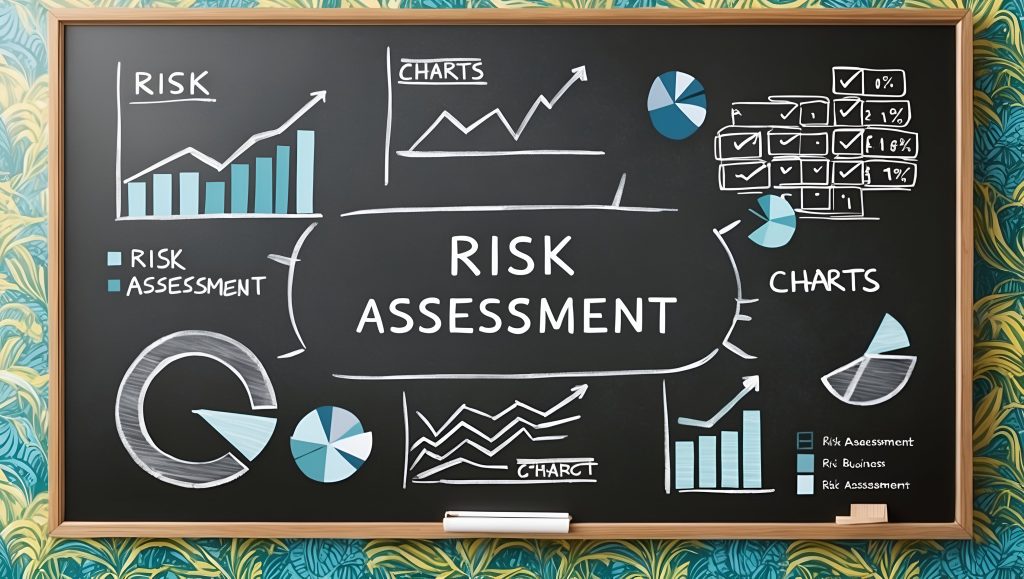Risk management is an essential practice for companies of all sizes and sectors. In today's business world, characterized by rapid changes and uncertainties, the ability to identify, assess, and mitigate risks can be the difference between success and failure.
In this blog, we will guide you through the steps to implement effective risk management in your company, ensuring you are prepared to face challenges and seize opportunities. Happy reading!
What you will find on this blog:
ToggleBut first, what is risk management?

Risk management refers to identifying, assessing, and prioritizing risks, followed by applying resources to minimize, monitor, and control their probability or impact.
In other words, it's how companies prepare to deal with uncertainties that may affect their objectives.
Successful risk management allows companies to operate more safely and efficiently, ensuring business continuity and asset protection.
Looking for risk management software? Meet Belt!
Why is risk management critical?
Companies that ignore or underestimate risks run the danger of facing financial losses, reputational damage, legal issues, and even bankruptcy.
Conversely, those who implement effective risk management can anticipate problems and respond quickly to them, minimizing damage and often turning challenges into growth opportunities.
What are the fundamental principles of risk management?
To implement risk management effectively, it is essential to understand the basic principles that guide this process. These include:
- Risk Culture:Risk management should be integral to the organizational culture. All employees, from top management to operational levels, must be aware of the importance of identifying and managing risks.
- Top Management Involvement:Top management should be involved in the risk management process, providing leadership, resources, and support.
- Continuous Process:Risk management is ongoing, so it should be reviewed and adjusted regularly to reflect changes in the company’s internal and external environment.
How to Implement Risk Management in Your Company

1- Risk Identification
The first step in implementing risk management is identifying risks.
This step involves identifying all possible threats to the company. These threats can be internal (such as operational failures or compliance issues) or external (such as economic changes or natural disasters).
Tools like brainstorming, SWOT analysis, and risk maps are helpful at this stage to ensure a comprehensive view of possible risks.
2- Risk Analysis and Evaluation
After identifying the risks, it is crucial to analyze and evaluate them. This analysis should consider the likelihood of each risk occurring and its potential impact on the company.
Moreover, a practical way to do this is by using a risk matrix, which classifies risks based on their probability and severity.
3- Mitigation Plan Development
With the risks identified and evaluated, the next step is to develop strategies to mitigate these risks. The main approaches include:
- Risk Avoidance: Altering or eliminating processes to avoid certain risks altogether.
- Risk Transfer: Using insurance or contracts to transfer risk responsibility to third parties.
- Risk Reduction: Implementing controls and measures to reduce the likelihood or impact of risks.
- Risk Acceptance: Choosing to accept certain risks when the cost of mitigation is higher than the potential impact.
4- Implementation of Mitigation Strategies
After developing the plans, the next phase is the implementation of the mitigation strategies.
This involves allocating resources, defining responsibilities, and integrating mitigation measures into the company's daily processes.
Additionally, automation technologies and monitoring tools can be particularly helpful in ensuring that the strategies are applied consistently and effectively.
Looking for risk management software? Meet Belt!
5- Monitoring and Review
Risk management is an ongoing process. Risks can change over time, and new risks can arise.
Therefore, it is essential to monitor the internal and company's external environment of the companand regularly review the mitigation strategies.
Implementing KPIs (Key Performance Indicators) for risk monitoring and conducting periodic audits are recommended to keep risk management up-to-date and effective.
Rely on risk management software for risk management implementation
In a scenario where different areas need to work together, it’s crucial to have an organized approach when implementing ISO 31000-based risk management. An efficient way to do this is by using tools that track safety indicators, as this facilitates internal company operations.
The suggestion is to adopt risk management software that can gather and organize all the information. This provides essential resources for the risk management process to function well. With this solid foundation, the company can effectively deal with risks to employee health and safety. The Belt, risk management software, is an interesting option in this regard.
An additional advantage is that Belt helps to understand risks in each activity more precisely. This allows for better planning to reduce these risks and implementing controls that truly work.
Frequently Asked Questions
1- What are the types of risks?
Risks can be operational, financial, strategic, compliance-related, reputational, and security-related.
2- How do you manage risks?
Risk management involves identifying, assessing, and addressing risks and continuously monitoring them to minimize their impacts.
3- What are the three main processes of risk management?
The three main processes are risk identification, risk assessment, and risk treatment.
Conclusion
As you can see, risk management is a crucial element for the success and sustainability of any company.
By identifying, assessing, mitigating, and monitoring risks, companies can protect their assets, improve their operations, and ensure their continuity in the long term.
Effective risk management implementation requires commitment, planning, and a systematic approach, but its benefits far outweigh the efforts involved.
Remember, in today’s business environment, risk management is not just a necessity but a competitive advantage.
Like the content? Don’t forget to follow Actio on Instagram, Linkedin and Facebook.






